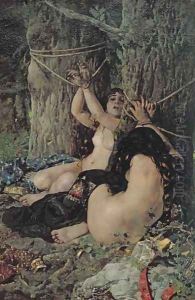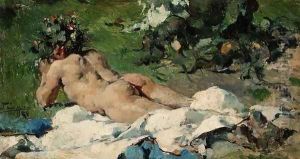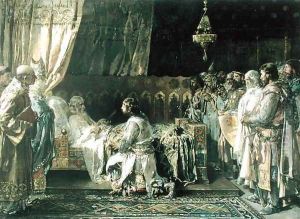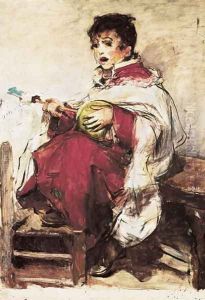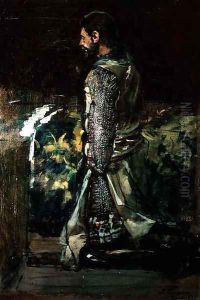Ignacio Pinazo Camarlech Paintings
Ignacio Pinazo Camarlech was a prominent Spanish painter and a key figure in the transition from Romanticism to Impressionism within Spanish art. Born on January 11, 1849, in Valencia, Spain, Pinazo showed an early interest in art, despite facing economic hardships that forced him to work from a young age. His talent and determination led him to study at the San Carlos Royal Academy of Fine Arts in Valencia, where he began to develop his artistic skills and vision. Throughout his career, Pinazo was known for his innovative approach to light and color, characteristics that aligned him with the Impressionist movement, though he maintained a distinct style that was uniquely his own.
Pinazo's work spans a wide range of subjects, including portraits, landscapes, and historical scenes, reflecting his versatility and interest in exploring different genres and techniques. He was particularly adept at capturing the effects of light on various surfaces, a hallmark of Impressionist painting. Despite his association with Impressionism, Pinazo did not confine himself to this movement alone; his work also exhibits elements of Realism and Symbolism, demonstrating his resistance to being categorized within a single artistic style.
Over his lifetime, Pinazo was both a prolific artist and an influential teacher, contributing significantly to the Valencia art scene. He was awarded a scholarship in 1876 to study in Rome, where he was exposed to classical art and the emerging trends of European painting. This experience greatly influenced his artistic development, enriching his palette and broadening his thematic range. Upon returning to Spain, Pinazo became a professor at the San Carlos Academy of Fine Arts, where he mentored future generations of artists, including his own children, Ignacio Pinazo Martínez and José Pinazo Martínez, who also became painters.
Despite his critical success and contributions to Spanish art, Pinazo's work was not widely recognized outside of Spain during his lifetime. It was only posthumously that his importance and influence were fully acknowledged, leading to a reevaluation of his role in the development of modern Spanish painting. Today, Pinazo is celebrated for his innovative approach to painting and is considered one of the leading figures in the transition towards modern art in Spain. He passed away on October 18, 1916, in Godella, Valencia, leaving behind a legacy that continues to influence and inspire artists around the world.
